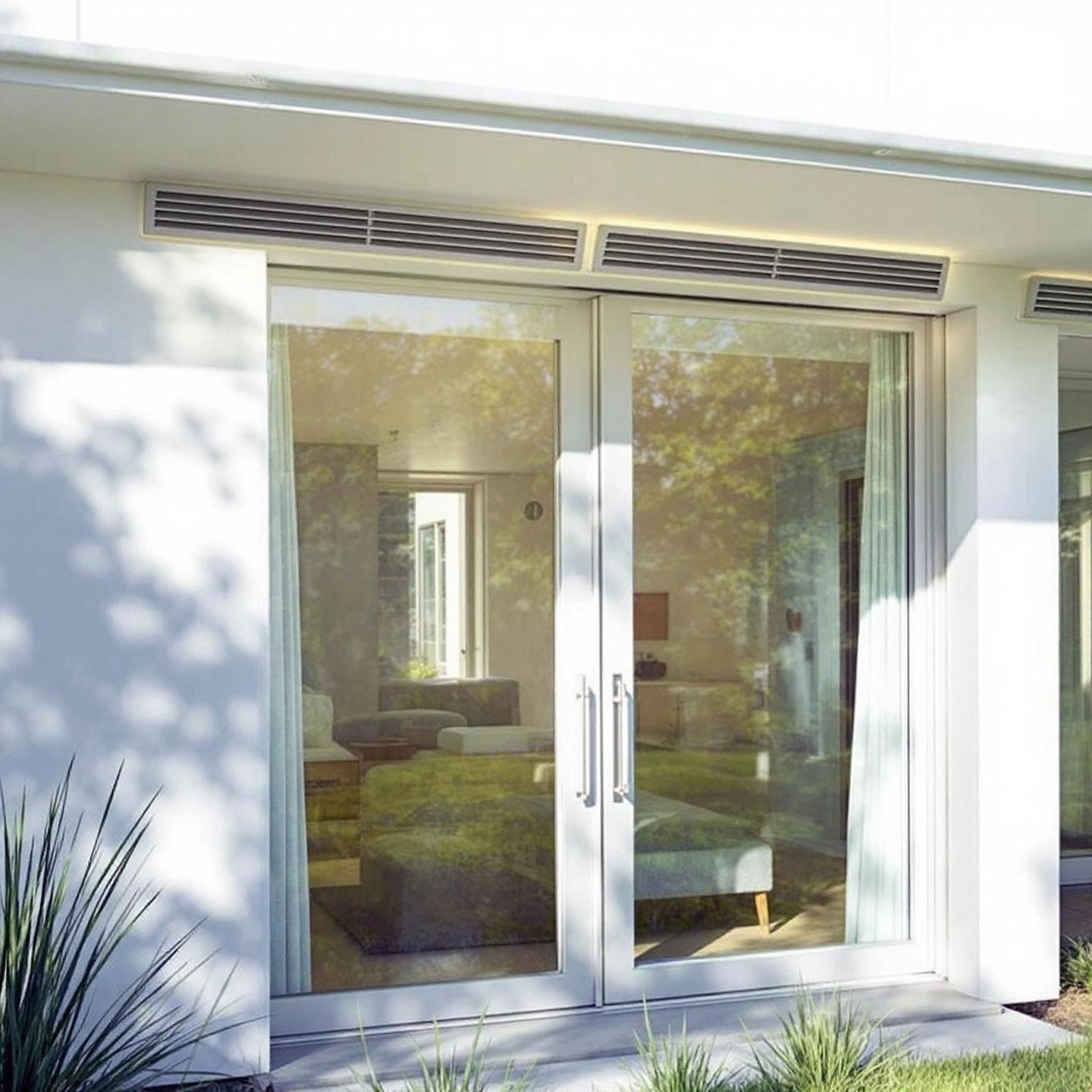
Ever wondered how modern homes manage to stay both energy efficient and well-ventilated? As buildings become increasingly airtight to conserve energy, ensuring a consistent flow of fresh air indoors can seem like a challenge. That’s where window trickle vents come into play—a small, often overlooked feature with a big impact on your comfort and health.
So, what exactly are window trickle vents? These are slim, adjustable openings built into the frame of a window. Their main purpose is to provide continuous background ventilation for windows, allowing a gentle flow of fresh air into your living space even when windows are closed. Unlike simply opening a window, trickle vents offer a controlled, secure, and energy-efficient way to ventilate your home throughout the day and night.
Imagine you’re cooking, showering, or just going about your daily routine. All these activities release moisture and indoor air pollutants, which can get trapped in today’s well-sealed homes. Without proper ventilation, this buildup can lead to condensation, mold growth, and poor air quality. Trickle vents help tackle these issues by:
Why are they becoming more important? As highlighted by experts, modern window and door designs are far more draught-proof than older models, which means natural ventilation is significantly reduced in energy-efficient buildings. Trickle vents restore the necessary air exchange, supporting both health and comfort in homes and workplaces.
This guide will walk you through everything you need to know about window trickle vents, from understanding their key benefits and different types, to navigating building regulations and practical installation tips. By the end, you’ll see how these small components play a critical role in maintaining a safe, comfortable, and compliant indoor environment—without sacrificing the advantages of modern, energy-efficient building design.
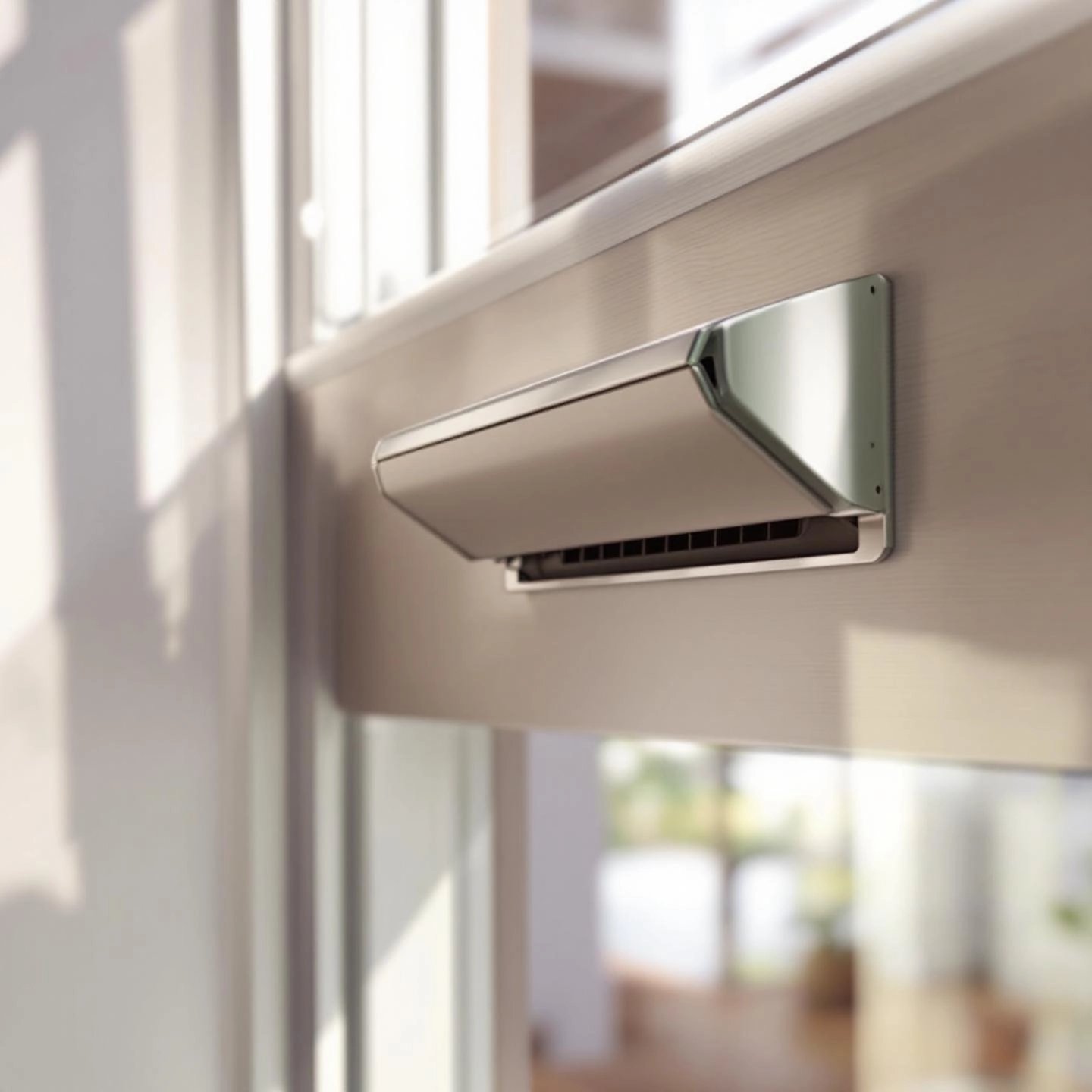
Ever noticed droplets forming on your window panes, or a musty smell lingering in certain rooms? These are telltale signs of excess humidity and poor air circulation—common challenges in today’s well-insulated homes. If you’ve ever asked yourself, "what are trickle vents in windows" or wondered if they really help with condensation, you’re not alone. Let’s break down the purpose and real-world benefits of these small but mighty features.
At its core, a trickle vent is a discreet, adjustable opening integrated into the frame of a window or door. Its main job? To let a small, controlled amount of fresh air "trickle" into your home—even when your windows are closed. This process is called background ventilation, and it’s essential for maintaining a healthy indoor environment.
Imagine it’s a chilly winter day. You want to keep the warmth in, but you also need to let out humid air from cooking, showering, or even just breathing. Trickle vents allow you to do both—maintaining comfort and reducing the risk of moisture-related problems without the need to fling open a window.
Condensation forms when moist, warm air meets a cold surface—like your window glass. Over time, this can lead to water pooling on sills, damage to window frames, and even black mold growth. So, do trickle vents stop condensation? They certainly help. By ensuring a constant flow of air, trickle vents allow excess moisture to escape, lowering the humidity that causes condensation in the first place.
Here’s how this works in practice:
This is especially important in high-moisture areas like kitchens and bathrooms, or in homes where windows are often kept closed for security or energy reasons.
Trickle vents may be small, but their impact is significant. Here’s a quick rundown of their main advantages:
| Benefit | How It Helps |
|---|---|
| Reduces Condensation | Allows moisture to escape, preventing water droplets on windows and sills. |
| Prevents Mold Growth | Maintains lower humidity, making it harder for mold and mildew to thrive. |
| Improves Indoor Air Quality | Continuously replaces stale air with fresh, reducing allergens and pollutants. |
| Enhances Comfort | Ventilates rooms without causing uncomfortable drafts or significant heat loss. |
| Supports Energy Efficiency | Allows ventilation without needing to open windows fully, preserving warmth in winter. |
| Promotes Healthier Living | Reduces respiratory risks linked to damp and poor air quality, especially for children and the elderly. |
Because trickle vents can be adjusted, you can control the amount of airflow based on your needs and the season. This flexibility makes them a practical solution for year-round comfort and health.
In summary, trickle vents are designed not just to stop condensation, but to create a healthier, more comfortable living environment—without sacrificing energy efficiency or security. Next, we’ll explore why building codes increasingly require these features and how to ensure your windows meet the latest standards.
Ever wondered, “do windows have to have trickle vents?” If you’re planning to replace your windows or are building a new home, this question has never been more important. With the latest updates to building regulations, especially in regions like England and Wales, understanding the legal requirements around trickle vents in windows building regulations is crucial for a smooth, compliant project.
Imagine this: Modern homes are built to be airtight, which is great for energy savings but can trap humidity, odors, and pollutants inside. Over time, this can lead to condensation, mold, and poor air quality. To address these issues, building codes have evolved to require background ventilation in most new and replacement windows, with trickle vents now the preferred solution (FENSA).
Recent changes to Approved Document F mean that, as of June 2022, most new and replacement windows must include trickle vents. This applies to both residential and commercial properties, regardless of whether the original windows had vents. There are a few exceptions—such as listed buildings or conservation areas—but for the majority of homes, trickle vents are now a legal requirement.
Sounds complex? Don’t worry—compliance is manageable with the right approach:
| Step | Action |
|---|---|
| 1. Understand Local Codes | Check your region’s building regulations or Approved Documents (like Document F in England and Wales). |
| 2. Consult Professionals | Speak with a certified installer (such as FENSA Approved) for guidance on requirements and exemptions. |
| 3. Document Everything | Keep records of your window specifications and any communications with installers or inspectors. |
Remember, the responsibility for compliance typically falls on your installer, but it pays to be informed. If you’re unsure, ask your installer to explain how your new windows will meet the latest ventilation standards, or consult resources like the FENSA homeowner’s guide for further clarity.
By understanding and following these regulations, you’ll ensure your home stays healthy, comfortable, and fully certified. Next, let’s explore the different types of trickle vents available and how to choose the right one for your needs.
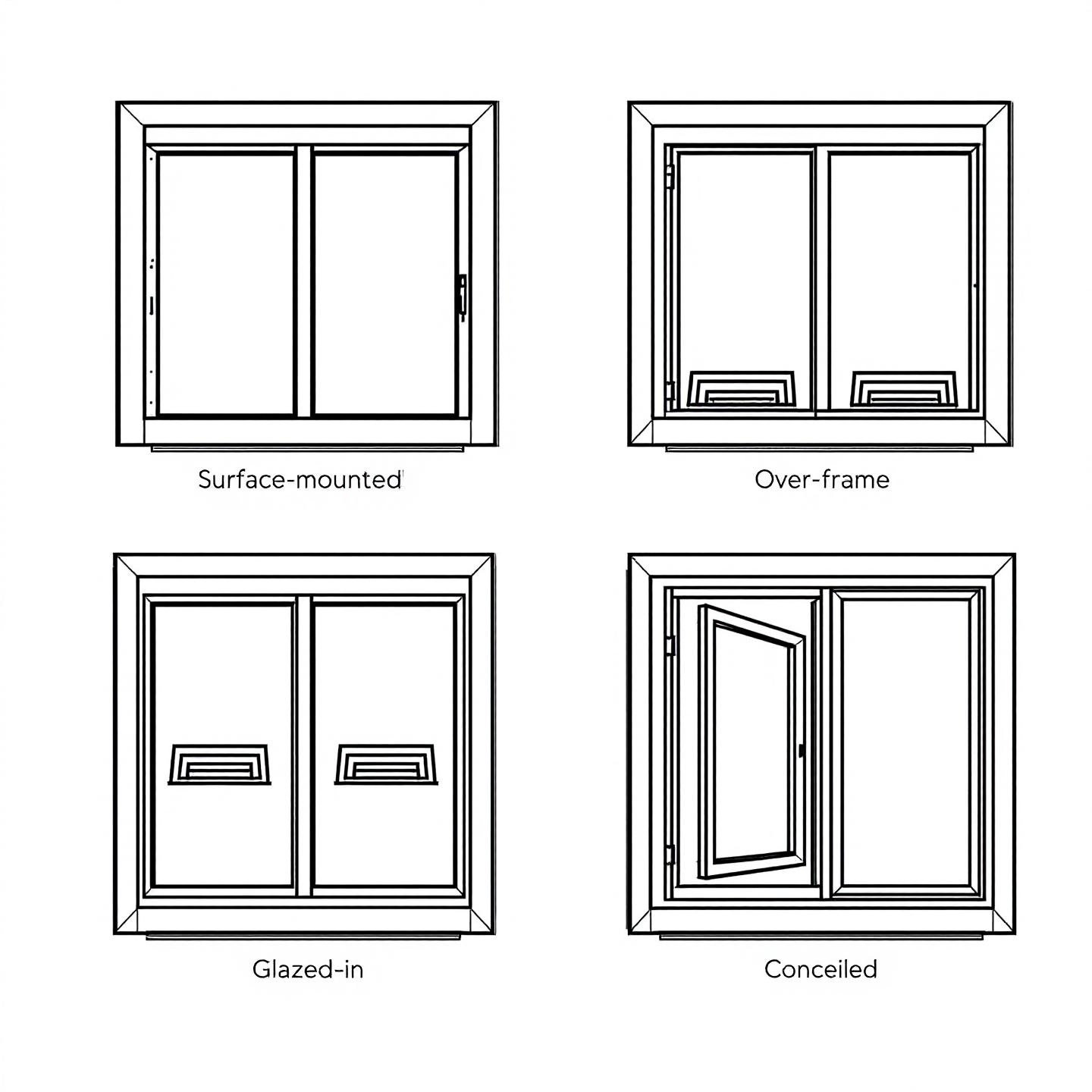
Ever stood in front of a window and wondered, “What’s the best way to let in fresh air without sacrificing warmth or style?” With so many types of trickle vents on the market, picking the right window ventilation strip can seem daunting. Let’s break down your options to help you make sense of it all.
Trickle vents may look similar at first glance, but their design and placement can have a big impact on both performance and aesthetics. Here’s a quick guide to the most common types you’ll encounter:
Once you’ve settled on the vent’s physical style, consider how you want it to operate:
| Vent Type | Best For | Pros | Cons |
|---|---|---|---|
| Through-frame (Surface Mounted) | New builds, standard window replacements | Discreet, versatile, easy to operate | Requires frame modification during manufacturing |
| Over-frame | Retrofits, windows with structural limitations | Good for upgrades, maintains airflow | More visible, may affect window aesthetics |
| Glazed-in | High-performance or limited-frame-space windows | Preserves frame, effective in airtight designs | Specialized installation, less common |
| Visible Hood | Areas with high humidity or condensation | Excellent protection from rain, robust ventilation | More prominent appearance |
| Concealed | Heritage or design-focused projects | Invisible, maintains window look | Can be more complex to fit, higher cost |
| Manual Operation | General use, all window types | Simple, user-controlled | Requires user attention to adjust |
| Humidity-Controlled (Automatic) | Bathrooms, kitchens, high-moisture areas | Hands-off, responsive to conditions | Higher initial cost, may need maintenance |
As you explore your options, think about your home’s needs: Do you want something subtle, or is robust airflow your top priority? Is the vent for a new window, or are you upgrading an existing one? Each type of trickle vent—whether a classic surface-mounted strip or a concealed design—offers a unique balance of performance, appearance, and ease of use.
Up next, we’ll guide you through selecting the best trickle vent for your specific window material—be it uPVC, timber, or aluminum—so you can match both form and function with confidence.
Ever stood at your window, wondering, "Which trickle vent will actually fit—and look good—on my frames?" With so many options, choosing the right vent for your window material can feel like a puzzle. Let’s break it down by frame type so you can match form, function, and style with confidence.
uPVC windows are a staple in modern homes, prized for their energy efficiency and low maintenance. But when it comes to ventilation, not every vent will do. Here’s what to consider:
Imagine a vent that blends into your window frame so well, you barely notice it’s there—until you enjoy fresher, drier air indoors.
Timber windows bring warmth and character to any home, but their natural material demands special care. Here’s how to choose wisely:
Picture a heritage sash window, upgraded with an almost invisible vent—your home’s charm stays intact, while comfort and air quality quietly improve.
Aluminum frames are valued for their strength, slim sightlines, and contemporary appeal. But their robust construction calls for precision when adding ventilation:
Imagine your aluminum windows maintaining their ultra-modern look, while quietly delivering a constant stream of fresh air—no bulky add-ons, just seamless function.
| Frame Material | Vent Considerations | Best Choice |
|---|---|---|
| uPVC | Slim fit, color-matched, weather-resistant | Surface-mounted, manual slider vent |
| Timber | Flexible fit, paintable/stainable, concealed options | Low-profile or concealed vent |
| Aluminum | Precision fit, minimalist, specialized supplier | Integrated, color-matched vent from aluminum specialist |
Ultimately, the right trickle vent is one that matches your window’s material, meets your ventilation needs, and blends effortlessly with your home’s style. By focusing on compatibility and durability—and turning to expert suppliers for specialized frames—you’ll ensure your indoor air stays fresh, your windows look great, and your investment lasts for years to come.
Next, let’s look at how trickle vents can be elegantly incorporated into specialty windows like sash and double-glazed units, preserving both beauty and performance.
Ever worried that adding ventilation might spoil the look of your classic sash windows or disrupt the clean lines of your double-glazed units? You’re not alone. Many homeowners and renovators face this exact challenge—how do you maintain the traditional or modern appeal of your windows while still getting the vital airflow that window trickle vents provide?
Sash windows are beloved for their timeless, elegant design. But their original construction didn’t account for today’s airtight standards, making them prone to condensation and stuffiness. The good news? Modern sash window trickle vents are designed to deliver background ventilation without sacrificing style.
Imagine a sash window that looks as authentic as ever but quietly keeps condensation at bay and lets your home breathe—no more black mould or damp corners.
Double-glazed windows are engineered for insulation, but their tight seals can trap humidity and stale air. That’s where trickle vents for double glazed windows come in. These vents are usually built into the window frame or, in some cases, into the glazing unit itself during manufacturing.
Picture your double-glazed windows staying crystal clear and free from moisture, all while keeping your home energy efficient and comfortable year-round.
When appearance is paramount—think heritage renovations or minimalist new builds—concealed trickle vents offer the best of both worlds. These vents are hidden within the window structure, often in the head of the outer frame, and covered by a color-matched canopy or trim.
So, whether you’re restoring a Victorian terrace or installing state-of-the-art glazing, there’s a trickle vent solution that can preserve your window’s beauty while delivering the ventilation your home needs.
Next, let’s walk through the practical steps of installing trickle vents—whether you’re tackling a DIY project or considering professional help—so you can enjoy fresh air and peace of mind, no matter your window style.
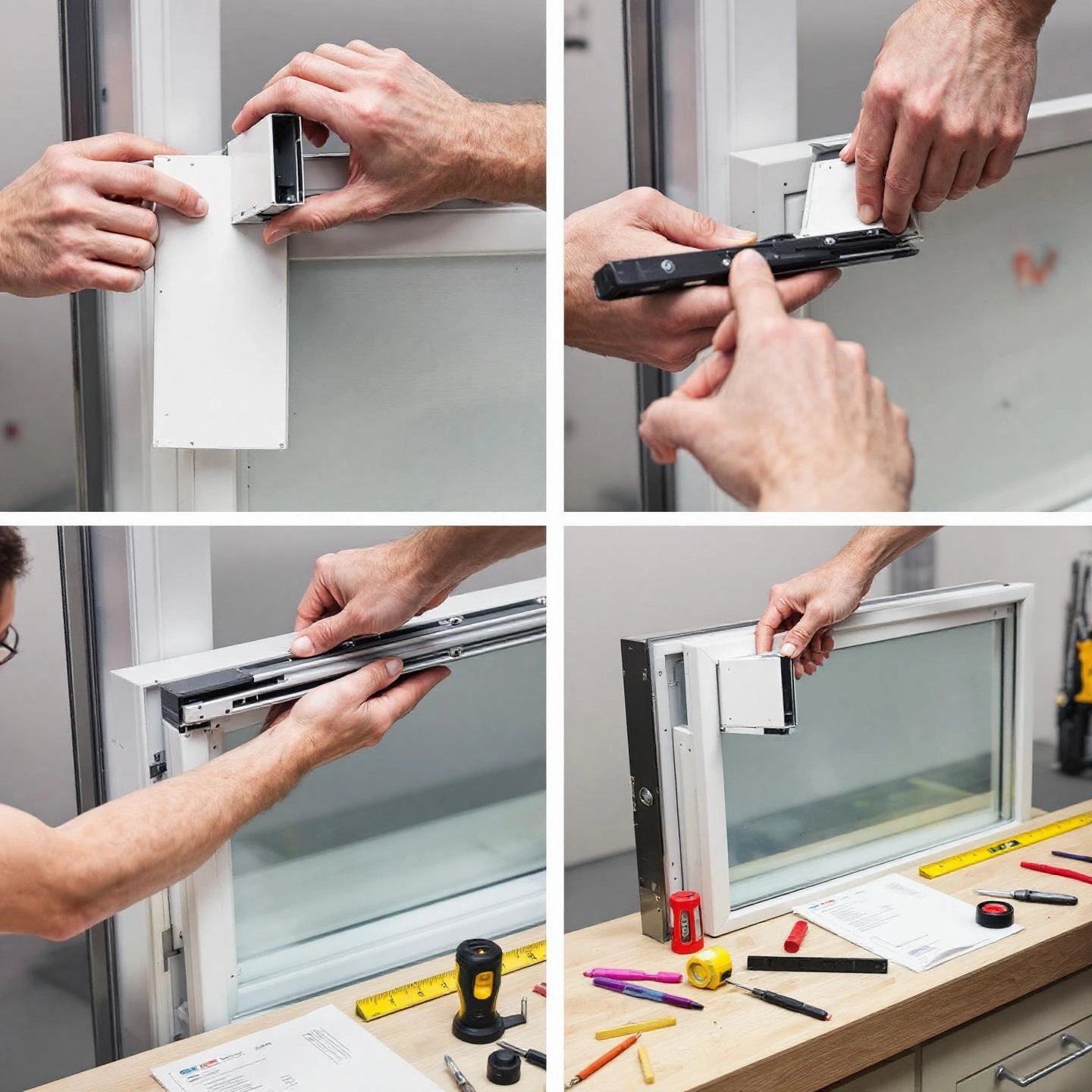
Thinking about improving your home’s airflow but worried the process sounds complicated? Whether you’re a DIY enthusiast or planning to hire a professional, installing window trickle vents is more straightforward than you might imagine. Let’s walk through the essentials, so you know exactly what to expect from start to finish.
Before you get started, gather the following tools and materials for a smooth installation:
Having the right tools on hand not only makes the job easier but also helps prevent mistakes that could affect the vent’s performance or your window’s integrity.
Feeling handy? Many homeowners tackle trickle vent window installation themselves, especially on uPVC frames. However, if you’re unsure about drilling into your window frame or want to preserve your window’s warranty, consider hiring a professional. Some manufacturers recommend professional installation to ensure compliance with building regulations and to avoid voiding warranties.
Once installed, keep your vents clean and free from dust or debris. Regularly opening and closing the vent ensures smooth operation and optimal airflow. If you ever notice resistance or blockage, gently clean the vent according to the manufacturer’s instructions.
With your trickle vents properly installed, you’re ready to enjoy fresher air, reduced condensation, and a healthier home environment. Next, we’ll look at retrofitting options for existing windows—so even older frames can benefit from modern ventilation solutions.
Thinking about improving your home’s ventilation but not ready to replace your windows? Wondering if retrofitting trickle vents to uPVC windows is even possible—or worth the effort? Let’s break down the process, challenges, and best practices, so you can boost your indoor air quality without compromising your window’s performance or appearance.
Absolutely. If you have older uPVC windows—or even timber or aluminum frames—adding trickle vents is a practical way to enhance airflow and reduce condensation. Modern building regulations often require background ventilation, and retrofitting is a popular solution for homes that predate these standards.
Imagine finally saying goodbye to misty windows and musty smells, all without the disruption or cost of a full window replacement.
Worried about damaging your frames? With careful planning and the right tools, you can retrofit trickle vents cleanly and safely. Here’s how:
Not comfortable with DIY? It’s perfectly fine to call a professional—especially if you’re unsure about drilling into your window frames or want to maintain your warranty.
Not keen on drilling into your windows or live in a listed building? Alternatives exist, such as mechanical ventilation systems or window-mounted air bricks, but these tend to be more expensive and invasive. Night vent positions (slightly ajar windows) are sometimes used, but they don’t provide secure, continuous background ventilation—and are not considered a compliant alternative to trickle vents under most regulations.
Older homes often lack adequate background ventilation, making them prone to condensation, mold, and stale air. Retrofitting trickle vents is a cost-effective way to bring these properties up to modern standards, improving comfort and helping to comply with updated building codes—without the need for full window replacement.
With a careful approach, retrofitting trickle vents can transform your indoor environment, reduce maintenance headaches, and safeguard your home’s structure. Next, we’ll explore how to source quality vents and keep them working their best for years to come.
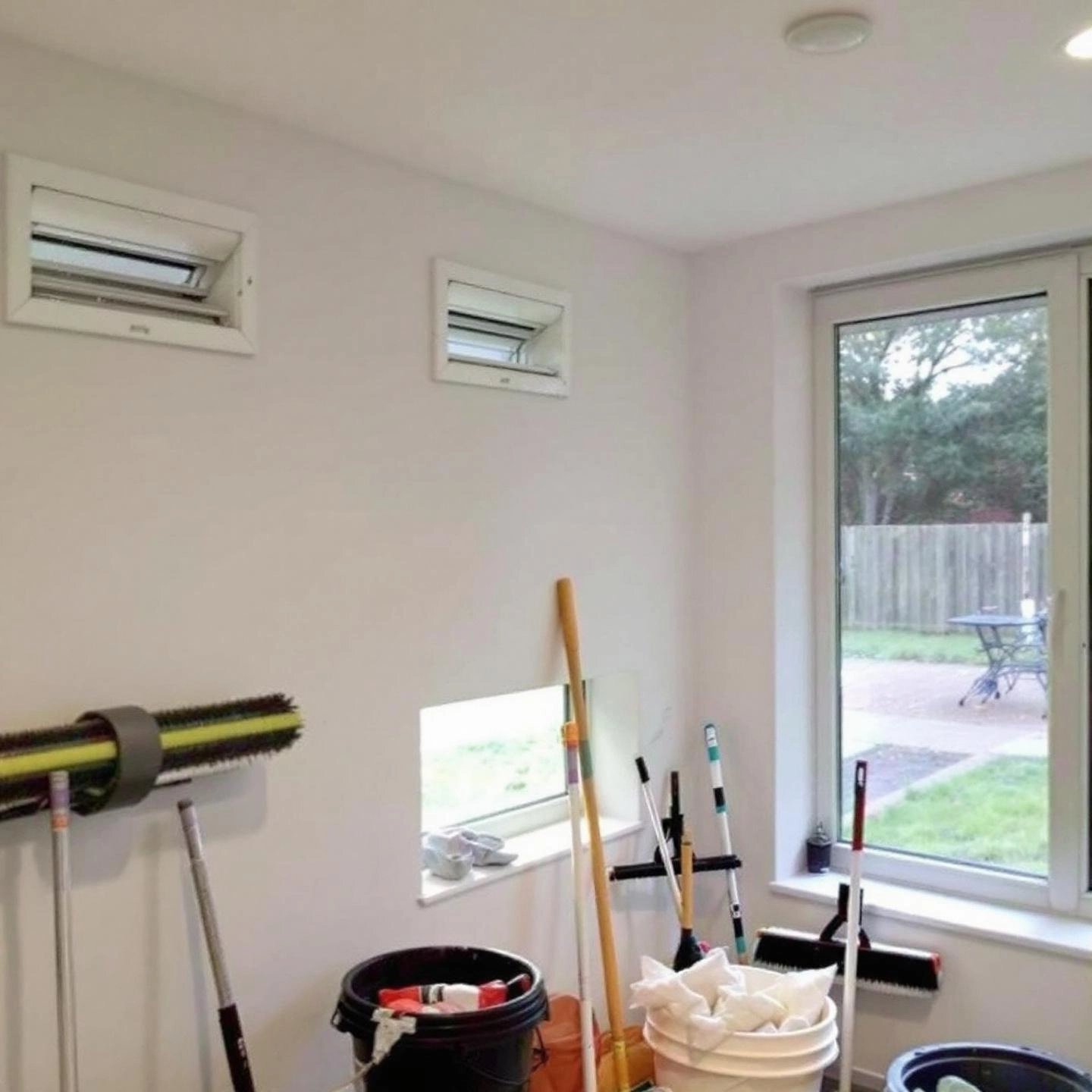
Ever found yourself wondering, “Where can I get the best trickle vents for windows—and how do I keep them working at their best?” Whether you’re tackling a DIY retrofit or specifying ventilation for a new build, sourcing quality trickle vents and maintaining them properly makes all the difference in performance and longevity. Let’s break down your options and offer some practical maintenance tips to keep your investment in top shape.
When it comes to purchasing trickle vents, you’ll notice there’s no one-size-fits-all approach. Your choice depends on your project’s scale, your window type, and your quality expectations. Here’s how to navigate your options:
| Source | Best For | Pros | Cons |
|---|---|---|---|
| Local Retailers (e.g., Screwfix) | Quick DIY, single-window replacements | Immediate availability, affordable, easy returns | Limited range, basic finishes, less expert advice |
| Specialist Suppliers | Home upgrades, custom requirements | Wide selection, expert guidance, tailored solutions | Longer lead times, may cost more |
| Direct from Manufacturer (e.g., Shengxin Aluminum) | Large/bespoke projects, commercial needs, best durability | Custom finishes, certified quality, bulk pricing | Typically requires larger order, lead time for custom work |
Once installed, trickle vents require very little attention—but a little care goes a long way. Here’s how to keep them working their best:
Imagine the peace of mind that comes from knowing your home is quietly ventilated, with no fuss or frequent repairs. Well-chosen and well-maintained trickle vents deliver years of reliable performance, improved air quality, and protection against condensation and mold.
For those seeking the ultimate in durability and performance—especially for commercial, high-spec residential, or bespoke projects—ordering directly from a trusted manufacturer like Shengxin Aluminum ensures you get certified, purpose-built solutions that meet the strictest standards for quality and compliance.
Now that you know where to find the right trickle vents and how to look after them, let’s wrap up with a summary of why these small additions are such a smart investment for any property.
Have you ever wondered why some homes feel fresher, stay drier, and seem to avoid those nagging issues like condensation or musty odors? The answer often comes down to one small but mighty feature: window trickle vents. These unassuming components are quietly transforming the way we approach indoor air quality, comfort, and compliance in today’s well-sealed buildings.
Let’s recap the window trickle vents benefits you’ll notice when you make them part of your property:
Imagine a home where condensation is a thing of the past, your windows stay clear, and every room feels comfortably fresh. Whether you’re upgrading a single room or managing a large property portfolio, trickle vents represent a smart, cost-effective investment in your property’s health and longevity.
And when quality, durability, and seamless integration matter—especially for demanding projects or modern aluminum frames—it pays to choose a supplier committed to excellence. Certified manufacturers like Shengxin Aluminum offer high-performance trickle vents designed for reliability, compliance, and peace of mind, making them a trusted choice for professionals and homeowners alike.
Key takeaway: Window trickle vents may be small, but their impact is huge—protecting your home from moisture, supporting healthy air, and ensuring you stay ahead of regulations. Don’t overlook this essential detail when planning your next window upgrade.
Ready to breathe easier in your modern home? Explore certified, purpose-built solutions and take the next step toward a healthier, more comfortable living space.
Trickle vents are highly recommended for maintaining a healthy indoor environment. They provide a steady flow of fresh air, which helps prevent condensation, mold, and the buildup of indoor pollutants. This is especially valuable in energy-efficient homes where airtight seals can restrict natural airflow. By using trickle vents, you can improve comfort and air quality without significant heat loss or compromising security.
In many regions, especially in the UK, building regulations require trickle vents in new and replacement windows to ensure adequate background ventilation. If your property previously had trickle vents, replacements must include them. For new installations, if no alternative ventilation system is present, trickle vents are typically necessary to pass inspection and meet compliance standards.
Yes, retrofitting trickle vents into existing windows is possible for most uPVC, timber, and aluminum frames. The process involves carefully drilling and fitting the vent to avoid damaging the window's structure or weatherproofing. This upgrade is popular in older homes to enhance ventilation and meet current building codes without replacing the entire window.
It’s best to keep window trickle vents open to maintain consistent background ventilation. This helps control humidity and prevents condensation, especially during colder months. Any cooling effect from open vents is minimal compared to the benefits of improved air quality and moisture control.
Window trickle vents offer several key benefits: they reduce condensation, prevent mold growth, improve indoor air quality, and help homes meet building regulations. They also support energy efficiency by allowing ventilation without opening windows fully, thus minimizing heat loss and maintaining security.
 Інтернет-сервіс
Інтернет-сервіс 0086 136 3563 2360
0086 136 3563 2360 sales@sxalu.com
sales@sxalu.com +86 136 3563 2360
+86 136 3563 2360